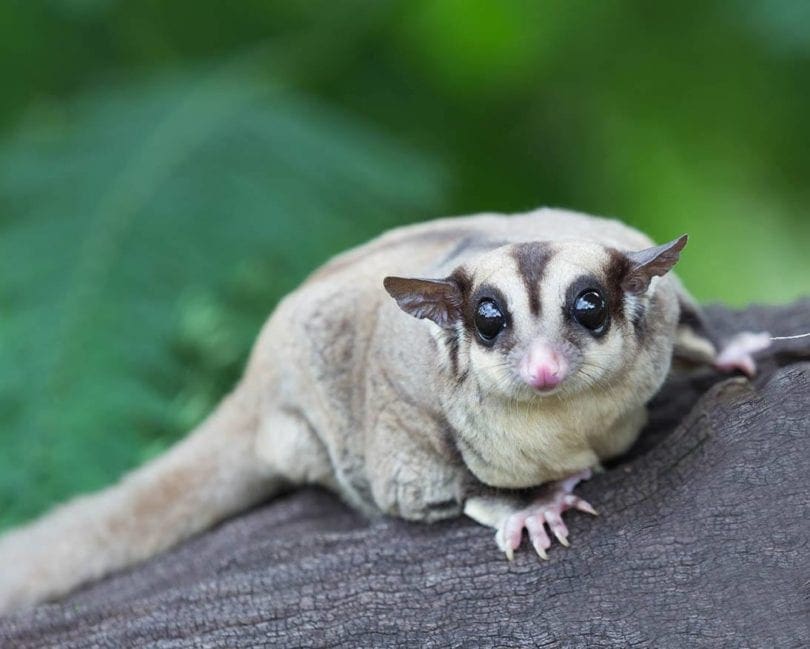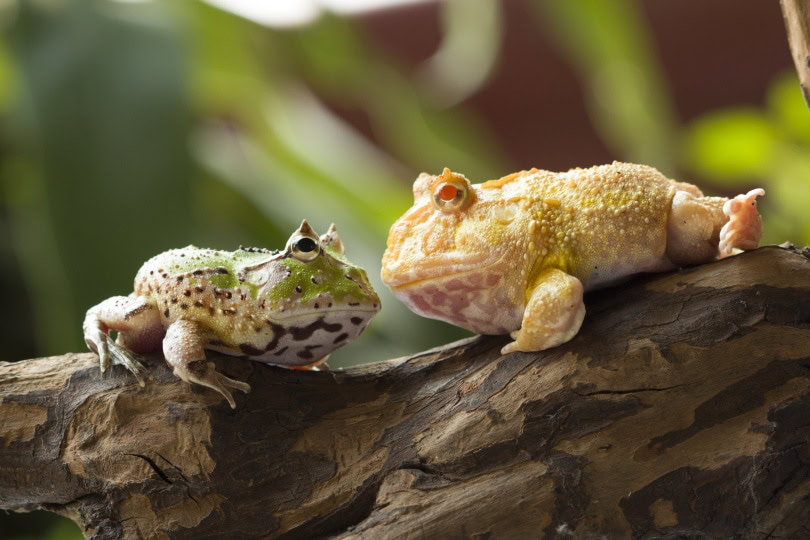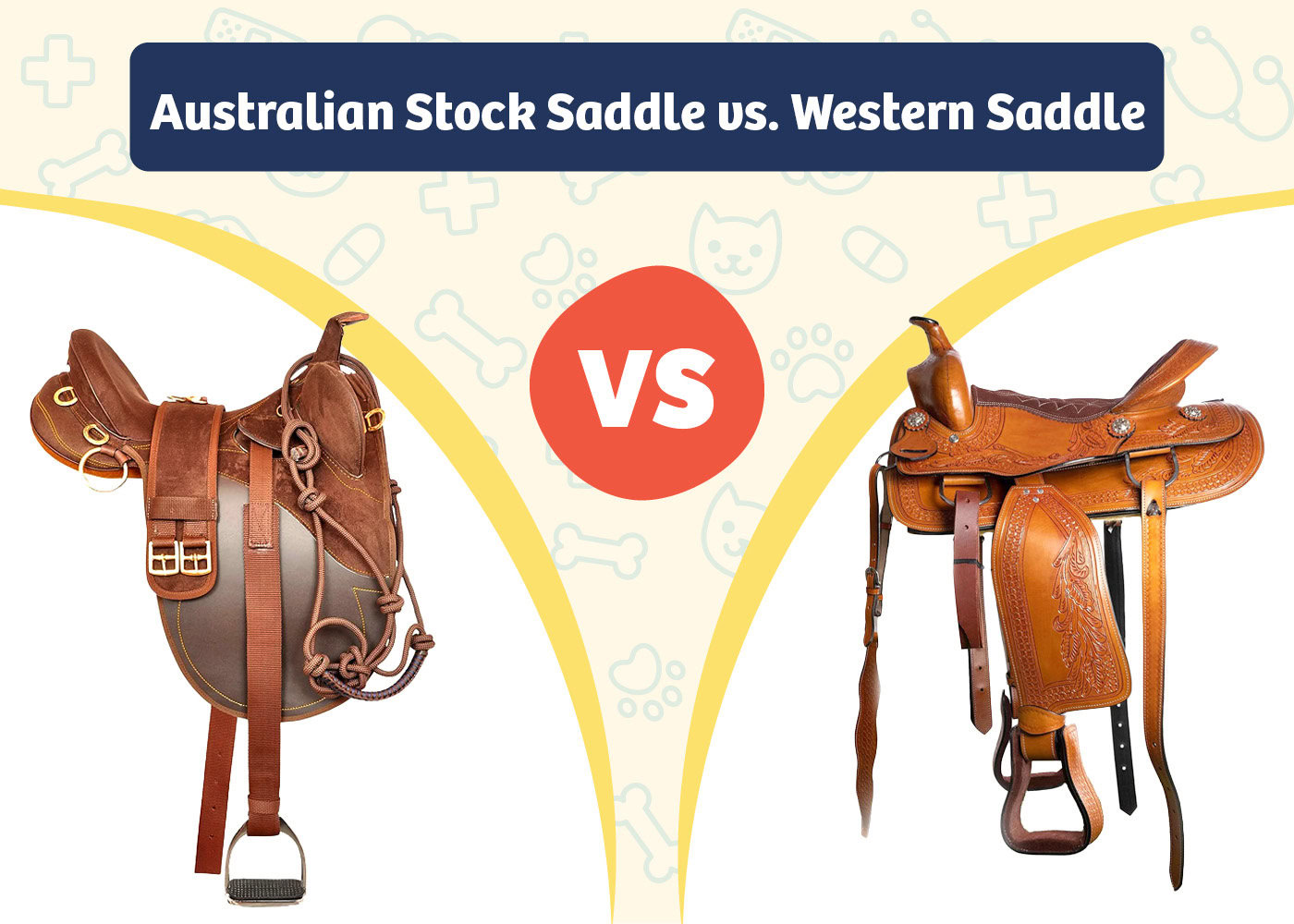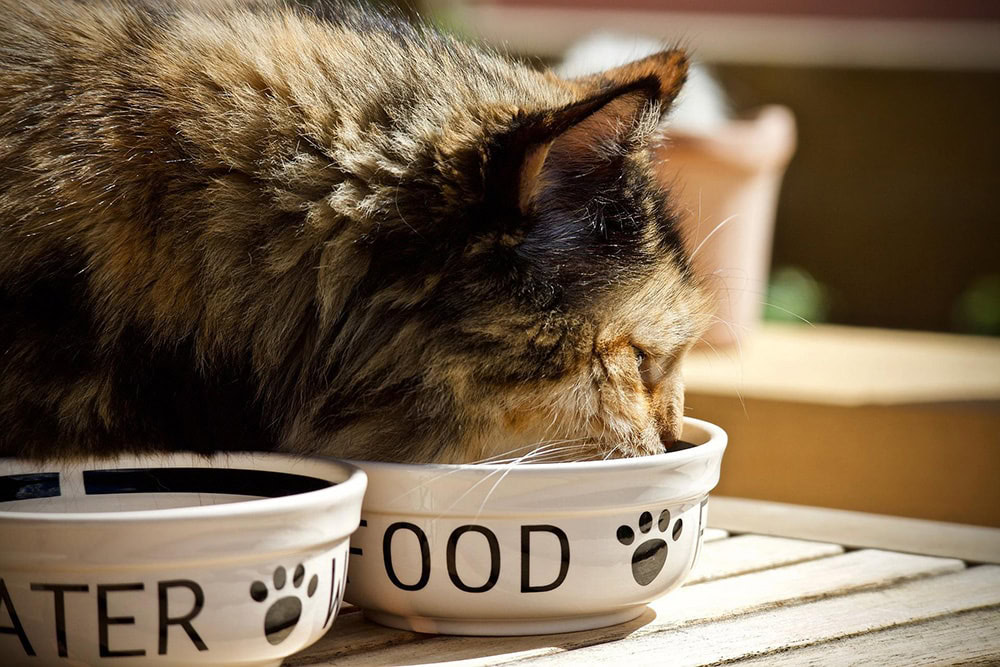Click to Skip Ahead
Sugar gliders are little marsupials that have become more common to breed and own as pets over the last decade. They are native to Australia and are primarily wild animals. Breeders can cross sugar gliders in captivity to reproduce stunning patterns and color combinations.
Standard gray sugar gliders are the most common kind. A grey sugar glider has shades of gray and a dark black or brown stripe that runs from the point of its nose to the beginning of its tail.
The standard gray color and pattern is a dominant gene that will display over the other colors when crossed with other varieties of gliders. They might carry the gray gene and have a chance of reproducing a different color pattern, but they do not express that color themselves.
Below are the standard colors and rare genetic crosses you might get when crossing sugar gliders.

The 4 Standard Sugar Glider Colors & Variations
1. Black Beauty Sugar Glider
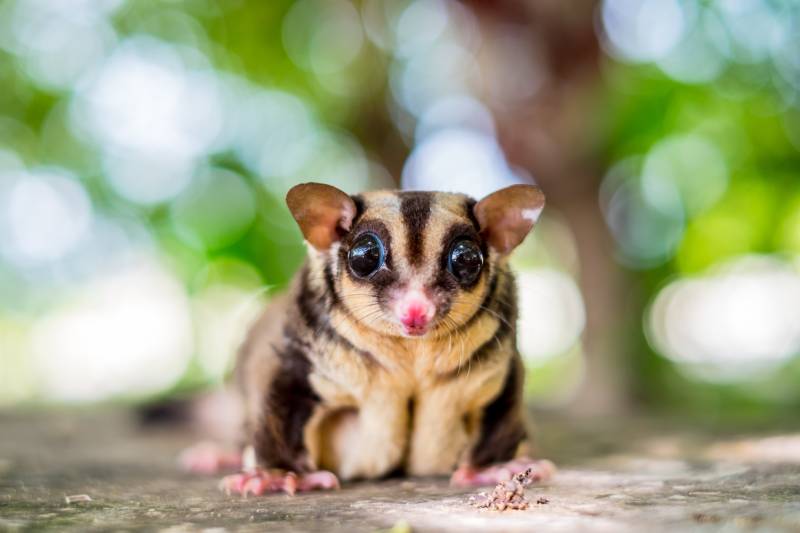
The Black Beauty variation of Standard Gray has typical colors and patterns but is several tones darker. It is difficult to breed for this variation and primarily seems to be random.
These sugar gliders have dark rings around their eyes, sometimes referred to as their “eyeliner.” The line running down their body is black, and even their stomach is a darker tone. They have black knuckles and a black chin strap that runs from their ears to their eyes and downward.
2. Cinnamon Sugar Glider
Cinnamon-colored sugar gliders are lighter cinnamon-brown with a standard gray color pattern. Their bodies have a brown-reddish tint.
Although this can be a cute color pattern, it is often the result of a bad diet that manifests as fur discoloration over the entire body. Even the fur on their stomach will become red or yellow-tinted.
3. Lion Sugar Glider
Lion sugar gliders are similar to the standard gray but with a honey-colored tint to their fur. They are also anatomically different most of the time. They often have a shorter nose on a more rounded face, part of which gives them the name “Lion.”
You can also find a white face variety of a lion sugar glider. They might not have the same rounded face and shorter nose that the typical lions do.
4. White Tip Sugar Glider
White-tip sugar gliders are not always considered a variation of the standard gray, but they are primarily gray and have the same pattern across their heads and bodies. The difference is the white tips on the ends of their tails. It can be an inch or up to half of their tail length. It is a recessive gene and can be challenging to breed.
The 14 Mosaic Sugar Glider & Variations
Gliders with mosaic patterns have a wide variety of designs and colors that assemble at random on the sugar glider.
Breeders try to selectively breed quite a few variations of a mosaic. However, there is not much evidence that breeding for a specific mosaic trait is possible. Some lines and markings have a higher rate of transferability than others.
5. Piebald Sugar Glider
Piebald sugar gliders have a mosaic pattern that can be random and asymmetrical but always have varying spots that are entirely unpigmented. They have large white splotches all over their bodies, which are often contrasted by dark black spots or stripes. The skin underneath these various color patterns will be pigmented according to the fur pattern on top.
6. True Platinum Mosaic Sugar Gliders
These sugar gliders have “true platinum” genetics and a mosaic pattern. They can have various other colors and patterns, but they will have pure platinum genes and colorations on their body. They almost always have the typical mosaic characteristics, including the white collar around their neck and a ringed tail.
7. Silver Mosaic Sugar Gliders
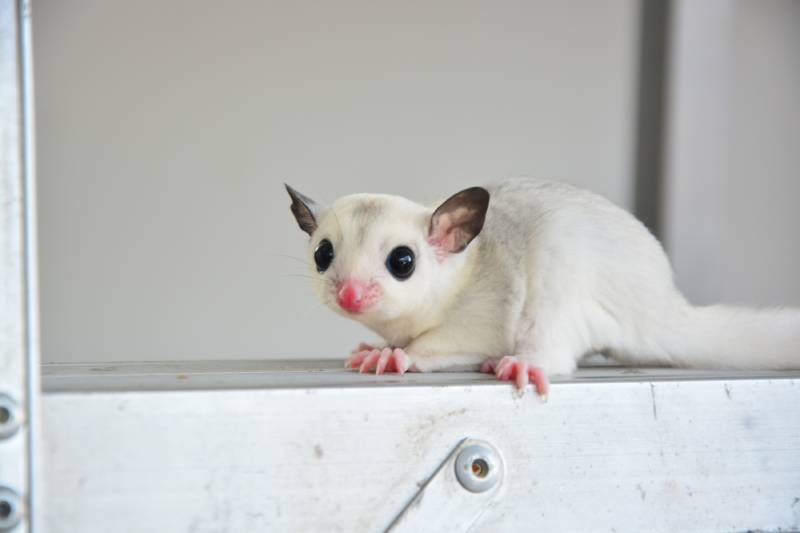
These sugar gliders can have a patchwork of light, silver-colored fur. They are often called platinum mosaic gliders, even though they do not have any platinum genetics.
8. White Mosaic Sugar Gliders
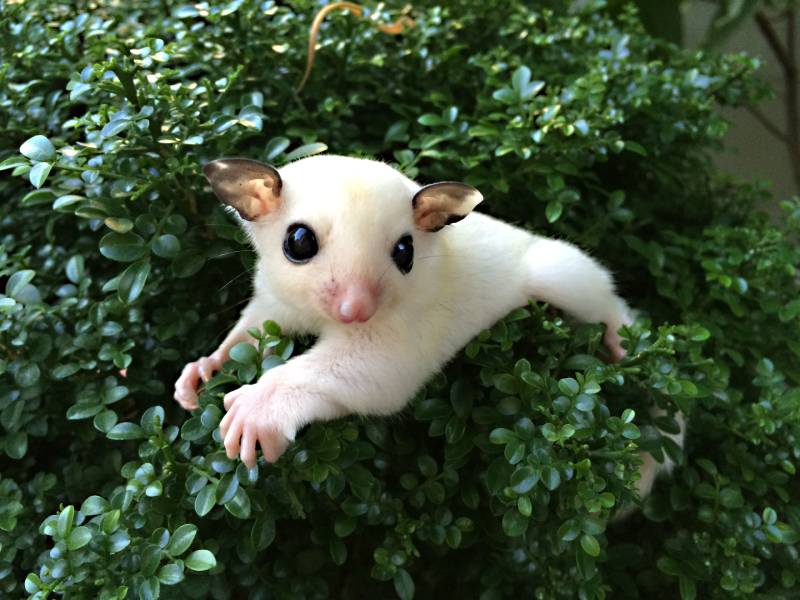
The white mosaic sugar glider has predominantly white fur with color variations that are all relatively light. They might have minimal dark spots, primarily on their ears or heads. They often look like leucistic sugar gliders, but they will not always have leucistic genetics. The difference between leucistic and white mosaic sugar gliders is that they must be born almost entirely white.
9. Ring Tail Sugar Glider
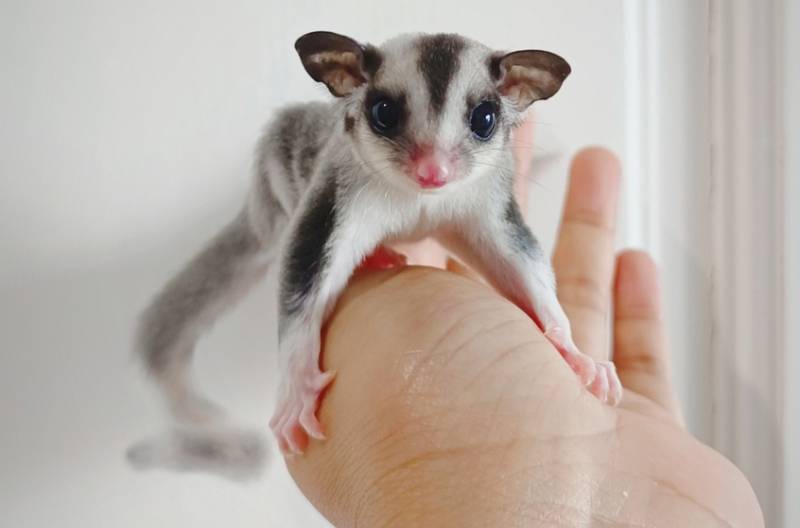
A ring-tail mosaic glider can have a wide variety of patterns on the body, whereas the tail has rings of colors from beginning to end. The colors include grays, blacks, whites, and silvers.
10. Mahogany Red Sugar Gliders
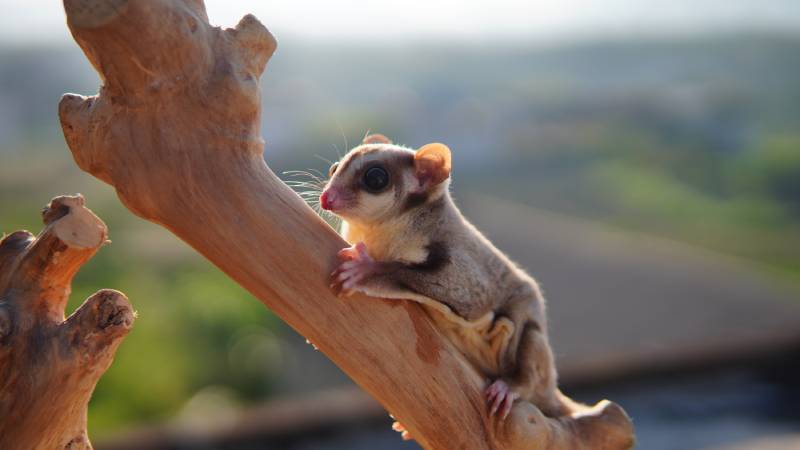
Mahogany reds have a similar pattern and markings as the standard gray but with tinted red and brown colors throughout their body.
These gliders can have albino, white face, and mosaic variations. They can also have a cedar-red color pattern that is a bit darker than a mahogany red glider.
11. Leucistic Sugar Glider
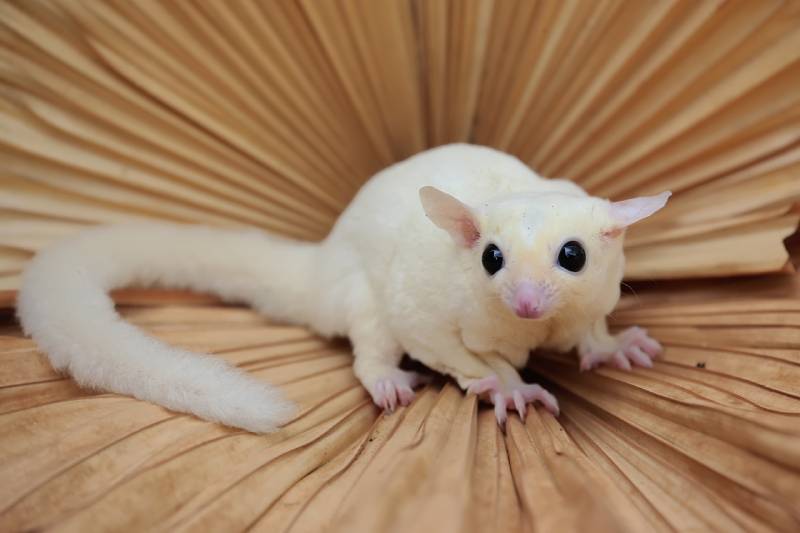
Leucistic sugar gliders have interesting genetics that can be used to reproduce another leucistic glider with the same recessive genes and be integrated with other recessive characteristics to encourage those traits.
Their fur is solid white without stripes, facial bars, or head triangles. They have black eyes and pink noses and toes.
12. Creamino Sugar Gliders
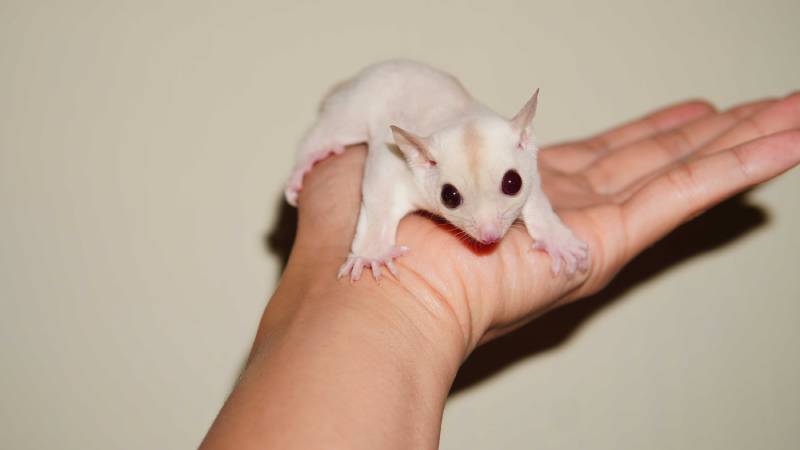
Creamino sugar gliders are an all-over creamy color. The stripe on the center of their body is tawny brown, and they have garnet-colored eyes.
To breed a Creamino sugar glider, you must cross two gliders expressing the same colorations since it is a recessive gene.
13. Platinum Sugar Glider
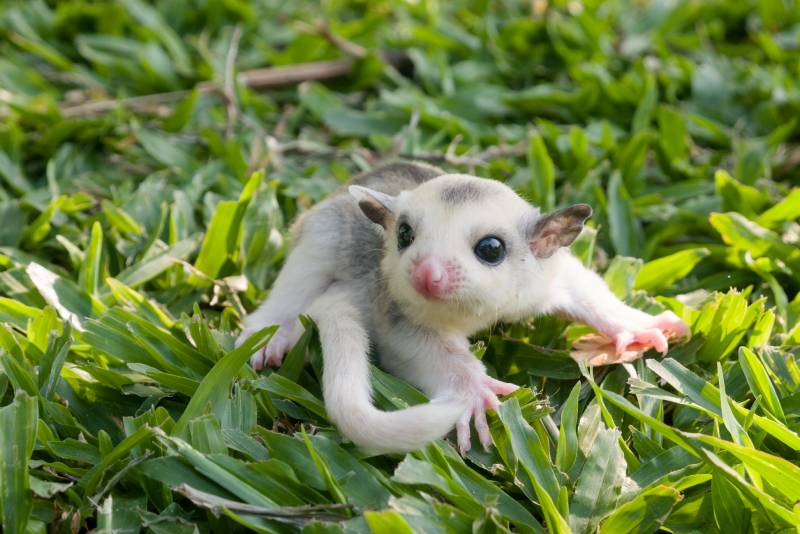
On true Platinum sugar gliders, the fur is light silver. Their stripe can be a light gray to taupe color. The other features of platinum sugar gliders often include white paws.
This color is also a recessive gene and needs to be bred with another sugar glider expressing the same gene. Interestingly, a sugar glider with a leucistic gene can reproduce with a platinum to reproduce another platinum.
14. White Face and White Face Blonde Sugar Glider
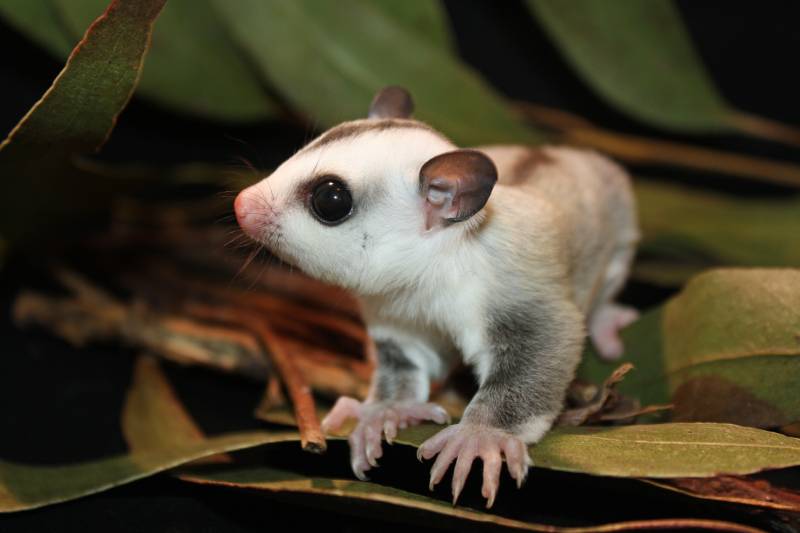
White face sugar gliders have similar color patterns as standard grays. The significant difference is the absence of facial markings, primarily the chin bar from their ear toward their chin. The white face can be a characteristic that can be bred in with almost any other coloration or pattern.
It is a dominant gene, and only one sugar glider in a pair needs to have the trait for it to reproduce in their offspring. If the sugar glider joeys do not have the white face expressed, they have not inherited the gene and will never reproduce other white face sugar gliders.
White face blonde is a slight variation in the overall characteristic. The fur on their stomach and their face will have a golden hue. This gene is dominant.
15. Melanistic Sugar Glider
Melanistic sugar gliders are the opposite of albino gliders. Their skin and fur are all tinted with a dark pigment. The condition results in an abnormally high concentration of melanin in every part of the animal. Not all breeders agree that melanistic gliders even exist, however, saying instead that they are a variety of black beauty gliders.
16. Albino Sugar Glider
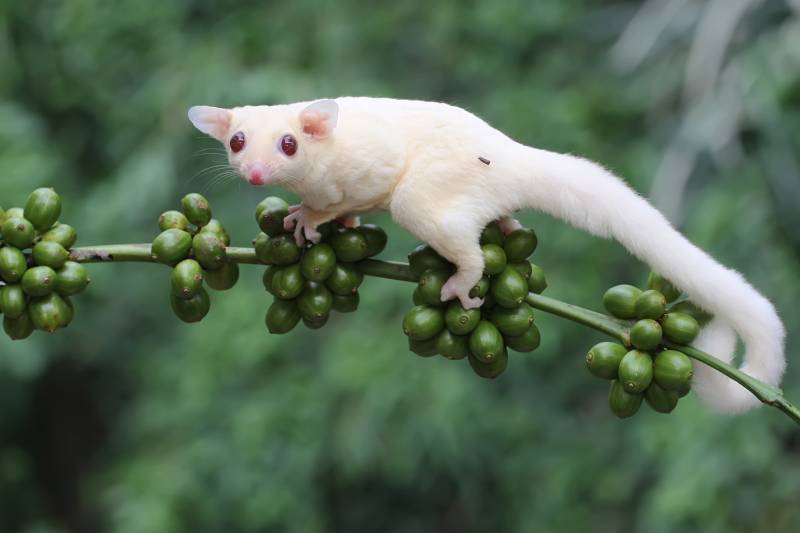
Albino sugar gliders have no pigment in their skin or fur and have stunning red eyes. Sometimes, they can be born with a faint pigmentation forming as a triangle on their head or making up some of a stripe along their back. It is often a faint yellow color.
To reproduce an albino glider, you must pair two albino gliders together because it is a highly recessive gene.
17. Ruby Leu or Double Recessive Sugar Glider
Ruby leu gliders have a combination of two recessive color patterns. They have a solid white color with red eyes that make them look similar to albino gliders.
Many combinations can be used to reproduce a Ruby Leu color, even though it is challenging to breed. These could be creamino and albino, an albino and leucistic, creamino and leucistic, creamino and platinum, and albino and platinum.
18. Caramel Sugar Glider
Caramel sugar gliders are thought to be a subspecies of sugar gliders, with a body that is about 20% larger than the traditional glider species. They also have larger ears than other gliders.
The caramel glider has a caramel-colored body with white hands and a cream-colored face. They can also have varying shades of gray.

Conclusion
As you can see, Sugar Gliders exhibit a remarkable array of colours and patterns, ranging from the classic Standard Gray to intricate and rare variations like Albino, Leucistic, and Ruby Leu. Each unique appearance results from genetic traits, some of which are recessive and require careful breeding to emerge. Regardless of their coloration, all Sugar Gliders share the same endearing qualities that make them so adorable and charismatic. If you’re considering adding one to your family, ensure you’re well-informed about their care requirements to provide a happy and healthy environment for your new pet.
Featured Image Credit: KAMONRAT, Shutterstock
